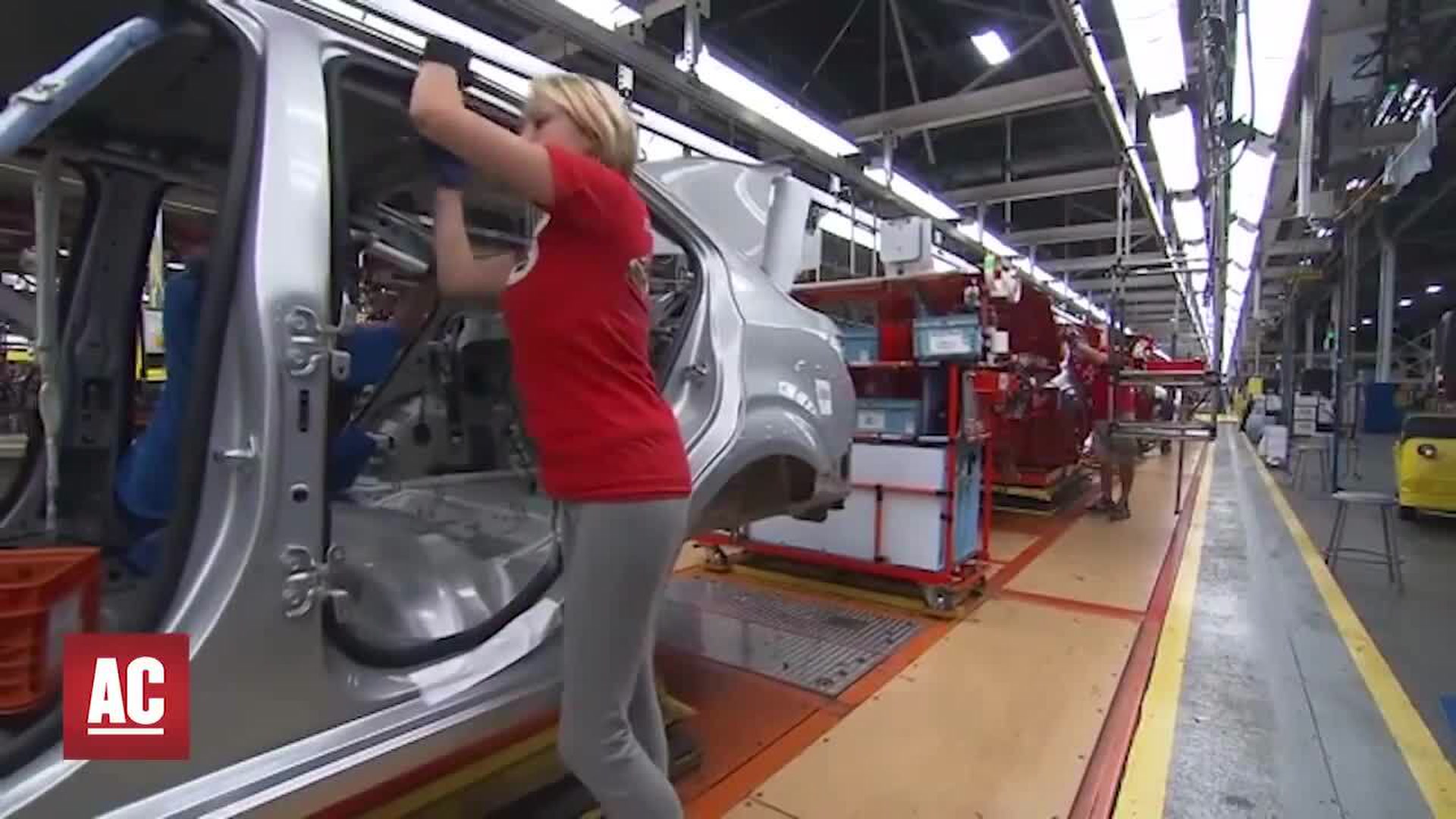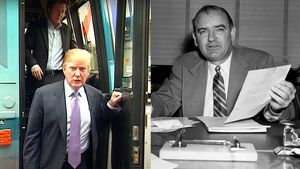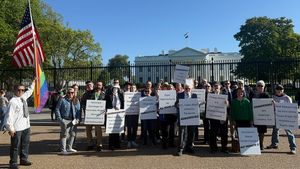New York (CNN) — Nearly 900,000 Americans sitting down to Thanksgiving dinner this week will have unions – and the double-digit pay increases they won – to thank.
That’s how many unionized workers have won immediate pay hikes of 10 percent or more in just the last year, according to ananalysis by CNN.
And the pace of increases of that size have been picking up. More than 700,000 of those workers won pay hikes over the course of the last six months, and of that group, nearly 300,000 saw deals reached in just the last six weeks.
“I would say this is the best run of wage increases won by labor since the period right after the end of World War II,” said Art Wheaton, director of labor studies at Cornell University’s School of Industrial and Labor Relations in Buffalo.
Some of the dealsarrived at the end of high-profile strikes, such as the United Auto Workers union strike against General Motors, Ford and Stellantis, which lasted more than six weeks, or one by 75,000 health care workers at Kaiser Permanente, who waged the largest US health care strike ever over just three days in October.
Strikes this summer by the 11,000 members of the Writers Guild and SAG-AFTRA, which represents 160,000 actors, shut down most film and television production by the major studios and streaming services. The unions won significant pay increases and job protections they were seeking. But because they didn’t have across-the-board increases in pay of more than 10 percent, those union’s 171,000 members are not included in those count of workers receiving double-digit pay raises.
Some deals won without a strike
Other deals happened because of the threat of a strike without the workers having to hit the picket lines. They include a deal covering 340,000 members of the Teamsters union at UPS or a series of deals reached by the Culinary union that prevented strikes at 18 different casinos along the Las Vegas Strip.
But some other new contracts reached got relatively little attention, such as 32,000 workers at DisneyWorld and 30,000 non-teaching employees of Los Angeles schools.
Many of the other lower-profile deals came in the airline industry, which operates under a different labor law than the one that controls most US labor relations, and greatly limits their ability to go on strike.
Without a strike threat, the negotiations got comparatively little public attention. But thanks to highly skilled work, wage gains at airlines have been substantial. Pilots at American and United airlines each won immediate pay increases of more than 20 percent, and more than 40 percent over the life of their contracts. Flight attendants at Southwest also won immediate wage increases of more than 20 percent.
Rank-and-file demand even more
And more wage gains in the airline industry are in the works. The Association of Professional Flight Attendants union that represents more than 23,000 members at American Airlines are summarily rejecting an immediate 11 percent pay increase offer, and demanding a 35 percent pay hike. Pilots at FedEx in July rejected a deal that would have raised wages 30 percent over four-and-a-half years. The parties just recently resumed negotiations.
And it’s not just airline workers who are sensing their increased leverage, rejecting negotiated deals and demanding more.
While 2,100 workers at two Detroit casinos returned to work this week after a month on strike, rank-and-file members ratified a contract that grants them an 18 percent pay hike in the first year of the contract. About 1,600 workers at a third casino in the city, one owned by MGM Entertainment, voted against a similar contract and will remain on strike.
And even with some of the contracts that pass, some union members offer significant opposition, believing they could have negotiated for even more.
The UAW contracts will give 145,000 members at traditional Big Three automakers immediate 11 percent pay hikes, 14 percentage points of additional pay increases over the life of the contract and a return of cost-of-living adjustments to protect workers from price increases in the broader economy. But nearly one-third of members at Ford and Stellantis voted against the deals, as did 45 percent of workers at GM, where workers at more than a dozen plant voted against the contract.
More ambitious union leaders
Labor experts say some of the success at the bargaining table tracesto a more ambitious set of bargaining goals by unions, sometime led by recently elected leaders who ran on the promise of better contracts.
“There’s growing frustration with the status of working people, a growing belief among workers that the growing inequality and excessive profits is a significant problem,” said Columbia Law School Professor Kate Andrias, an expert on labor and employment law. “The leadership of some of these unions won elections by pledging to take action to address that.”
That new activist leadership was in charge of negotiations at both the UAW and the Teamsters. And the UAW’s unique strike strategy also proved very effective.
Rather than targeting only one automaker in negotiations and possibly striking that target, it waged the first simultaneous strike against all three unionized automakers. But it didn’t shut down the entire industry, instead starting with a strike at one assembly factory at each automaker, and then expanding the scope of the strike six times in a successful effort to turn up pressure at the bargaining table.
But just as important as the unions’ leadership and bargaining strategy was the economic environment in which the talks were held.
Unemployment has been below 4 percent since early 2022, the longest period it has remained below that level since 1969. There are far more job openings than unemployed job seekers, the opposite of conditions in the US labor market most years.
That has left employers scrambling for help and less eager to see workers walk off the job thanks to paltry pay and poor working conditions.
And many of the employers agreeing to these deals had been reporting strong profits of their own.
UPS reported record profits in 2023, as did General Motors and Stellantis, while Ford reported near record profits. After suffering through a loss of business during the pandemic, seats on airplanes and hotel rooms at Vegas casino are full, and airfares and room rates are higher than they were before the pandemic.
Workers know how the bosses are doing
One of the UAW’s slogans during the auto strike was “Record profits, record contracts.” That proved to be the case in numerous labor talks.
It’s always better for a union to be negotiating with a financially healthy employer rather than a struggling one, said Greg Regan, president of the transportation trades department of the AFL-CIO.
“The economy is very strong right now. There’s a huge amount of profits. It’s true with auto industry, true with airlines, true with railroads,” Regan said. “A lot of times the profits soared because of reduced headcounts. In many ways this is a way to reset the labor market.”
And these contracts are also a sign that employers could have been paying workers more all along, said Heidi Shierholz, an economist and president of the Economic Policy Institute, a union-supported think tank.
“What we’ve seen until the recent period is a real imbalance of power has allowed employers to set wages at a level below what their revenue and profits could bear,” she said. “We’re seeing some reversal of that right now.”
These labor deals will therefore likely eat into corporate profits somewhat, but they’ll have limited impact on prices that businesses can charge, since pricing is more dependent upon the supply and demand for product than strictly on the cost to produce it.
Nonunion workers wages also going up
Union workers aren’t the only ones seeing increases in wages due to the tight labor market. Labor Department data shows that average hourly wage in October was up 4.3 percent over a year ago, and up 18 percent compared to three years ago, nearly the best 3-year gain in 40 years.
But not surprisingly, the union members are enjoying better gains. Union members earned average weekly pay of $1,216 last year, or 18 percent more than the average pay of $1,029 for nonunion workers, according to Labor Department data.
Some nonunion employers, notably foreign automakers Toyota, Honda and Hyundai that operate US factories, are raising their wages in the wake of the UAW deals. There arelikely concerns at those companies about the union’s stated goal of organizing workers there.
But despite the UAW’s ambitious organizing goals, US labor law is still stacked against union efforts to win the right to represent additional work places. And that is true even in cases where unions find widespread success, such as the union organizing drive at Starbucks.
The union there, Starbucks Workers United, has won votes at more than 360 locations since its first victory in December of 2021, or more than one every other day. But no contract has been reached for the more than 9,000 Starbucks workers who are now union members. The union just staged its largest strike at Starbucks for one day last week, but there’s no sign it is any closer to reaching deals for its members. The company and union blame each other for the lack of progress.
“They may not get one until they change the labor law,” said Cornell’s Wheaton. “There’s nothing in the labor law that say Starbucks has to say yes to a contract.”
One other factor behind many of these union negotiating victories is that they come in industries already heavy unionized. Overall only 7.2 million, or 6 percent, of private sector workers are union members. That’s down from nearly 12 million, or 17 percent in 1983 when the Labor Department started tracking union membership.
But about 46 percent of US auto production is still at unionized plants and most of the nation’s major airline pilots, mechanics and flight attendants are union members, as are workers in film and television industries.
So winning contracts in business segments with limited union representation is much more difficult.
Still, despite the fact that not all unions are able to share in the success so far, the high profile wins are an important lift for the US union movement, which has been losing membership, and bargaining leverage, for decades. And it can lead to more success down the road.
“I think there is a momentum aspect of this,” said EPI’s Shierholz. “The success, and the public support for these strikers, that stiffens the spine of those striking or threatening to strike. It feels like a lesson being re-learned about the power in collective action.”
The-CNN-Wire
™ & © 2023 Cable News Network, Inc., a Warner Bros. Discovery Company. All rights reserved.
UAW strikes deal

Video Source: Advocate Channel


















































